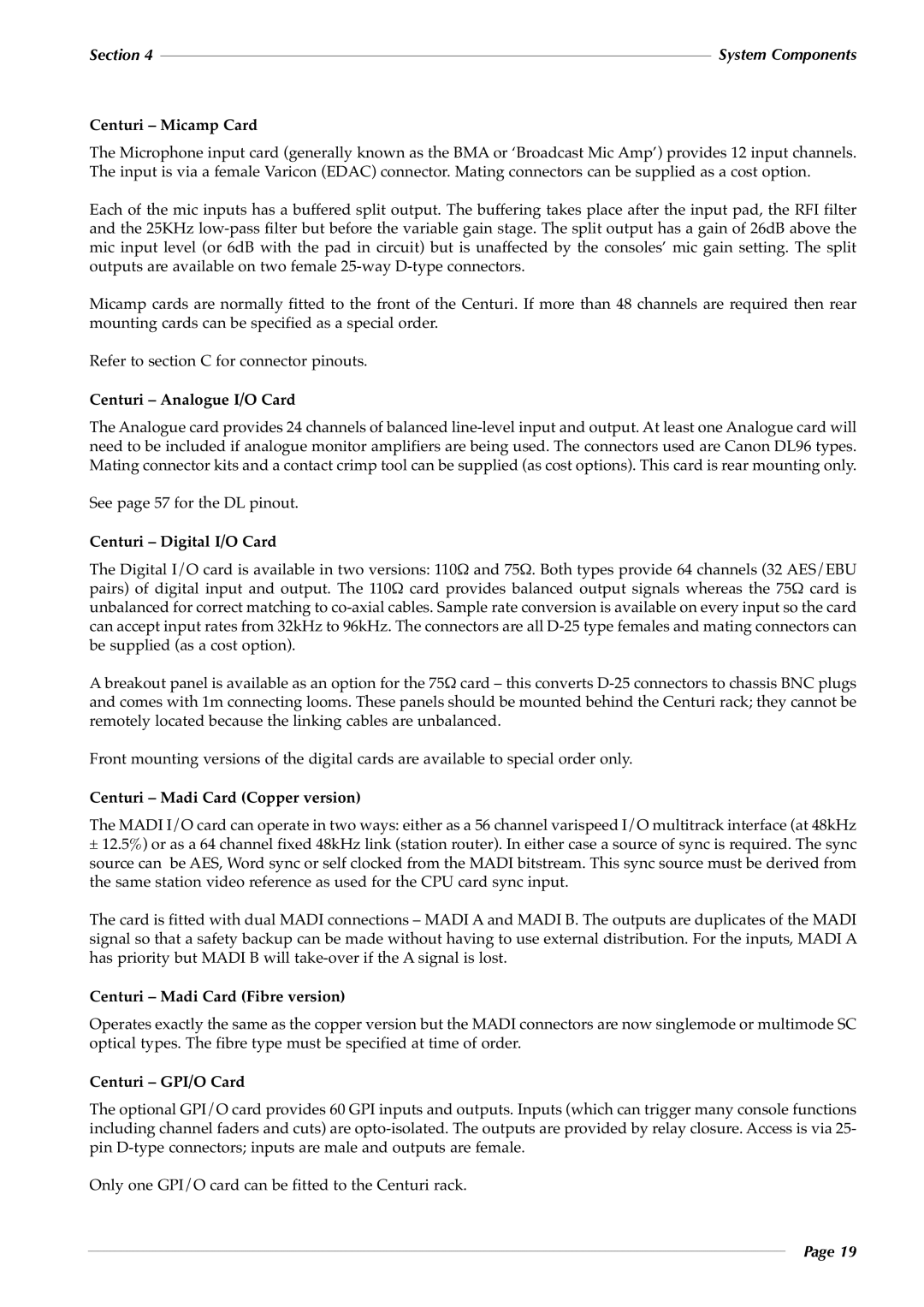
Section 4System Components
Centuri – Micamp Card
The Microphone input card (generally known as the BMA or ‘Broadcast Mic Amp’) provides 12 input channels. The input is via a female Varicon (EDAC) connector. Mating connectors can be supplied as a cost option.
Each of the mic inputs has a buffered split output. The buffering takes place after the in put pad, the RFI filter and the 25KHz
Micamp cards are normally fitted to the fron t of the Cent uri. If more than 48 channels are requir ed then rear mounting cards can be specified as a special order.
Refer to section C for connector pinouts.
Centuri – Analogue I/O Card
The Analogue card provides 24 channels of balanced
Centuri – Digital I/O Card
The Digital I/O card is available in two versions: 110Ω and 75Ω. Both types provide 64 channels (32 AES/EBU pairs) of di gital input and output. The 110Ω c ard provides balanced output s ignals whereas th e 75Ω card is unbalanced for correct matching to
A breakout panel is available as an option for the 75Ω card – this converts
Front mounting versions of the digital cards are available to special order only.
Centuri – Madi Card (Copper version)
The MADI I/O card can operate in two ways: either as a 56 channel varispeed I/O multitrack interface (at 48kHz
± 12.5%) or as a 64 channel fixed 48kHz link (station router). In either case a source of sync is required. The sync source can be AES, Word sync or self clocked from the MADI bitstream. This sync source must be derived from the same station video reference as used for the CPU card sync input.
The card is fitted with dual MADI connections – MADI A and MADI B. The outputs are duplicates of the MADI signal so that a safety backup can be made without having to use external distribution. For the inputs, MADI A has priority but MADI B will
Centuri – Madi Card (Fibre version)
Operates exactly the same as the copper version but the MADI connectors are now singlemode or multimode SC optical types. The fibre type must be specified at time of order.
Centuri – GPI/O Card
The optional GPI/O card provides 60 GPI inputs and outputs. Inputs (which can trigger many console functions including channel faders and cuts) are
Only one GPI/O card can be fitted to the Centuri rack.
Page 19
